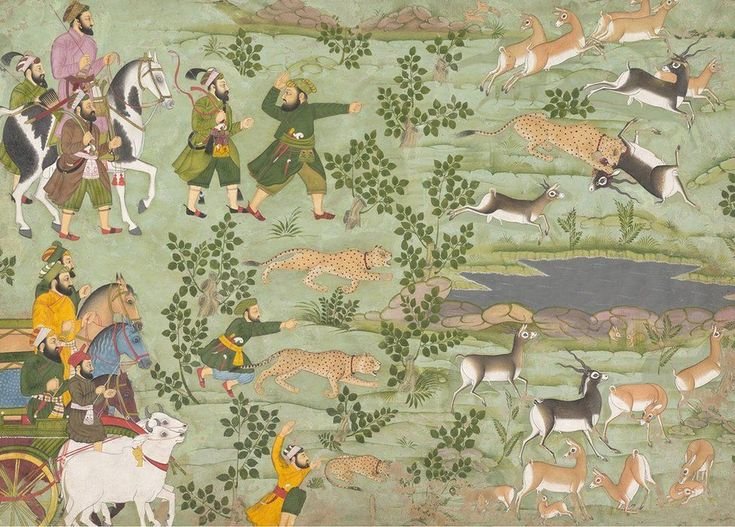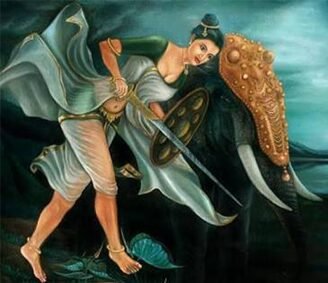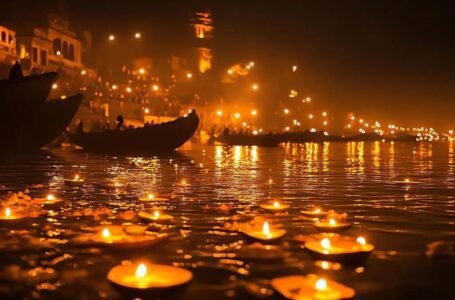Indo-Persian Art and Mughal Empire Art: Origins, Techniques, and Influence

Indo-Persian art is a remarkable fusion of Persian and Indian artistic traditions, which reached its pinnacle under the Mughal Empire (1526–1857). This art form is characterized by its intricate details, refined aesthetics, and a harmonious blend of Persian elegance with Indian richness. From miniature paintings and grand architecture to calligraphy, textiles, and decorative arts, Indo-Persian art played a significant role in shaping the visual and cultural identity of South Asia.
The Mughal emperors, with their Timurid and Persian heritage, were great patrons of art, inviting skilled artisans from Persia and Central Asia while also incorporating local Indian styles. As a result, a distinct artistic tradition emerged that influenced subsequent South Asian art for centuries. This article explores the origins of Indo-Persian art, its development under the Mughal Empire, the techniques used by artists, and its broader cultural significance.
Origins of Indo-Persian Art
Persian Influence on Indian Art
The roots of Indo-Persian art can be traced back to the Delhi Sultanate (1206–1526), when Persian artistic traditions began influencing Indian art and architecture. Persian artists, scholars, and architects arrived in India, bringing with them refined techniques in painting, calligraphy, and architecture. The Persian love for intricate details, floral motifs, and symmetrical compositions found a receptive audience in India, where indigenous artistic traditions already emphasized ornamental beauty.
Before the Mughals, the Lodhi and Tughlaq dynasties had already incorporated Persian influences in their court culture and architecture. However, it was under the Mughals that this synthesis became more structured and flourished into a distinctive Indo-Persian style.
Babur and the Introduction of Persian Aesthetics
Babur (r. 1526–1530), the founder of the Mughal Empire, was a descendant of the Timurid rulers, who were great patrons of Persian art. He had a deep appreciation for Persian aesthetics and brought Persian artists and architects to India. Though his reign was short and focused mainly on military conquests, Babur laid the foundation for the artistic patronage that his successors would expand. His admiration for Persian gardens and architecture was evident in the gardens he commissioned in Agra and Kabul, which were inspired by the Persian charbagh (four-part garden) layout.
It was his grandson, Akbar, who took Indo-Persian art to new heights by establishing a royal atelier and commissioning large-scale art and architectural projects.
Mughal Art: Development and Key Features
Miniature Painting
Mughal miniature painting is one of the most significant artistic achievements of the empire, blending Persian, Indian, and later European influences. These miniature paintings were often used to illustrate manuscripts, royal biographies, and historical chronicles.
Early Mughal Miniature Painting (Akbar’s Era, 1556–1605)
Akbar was instrumental in institutionalizing Mughal painting. He established a royal painting workshop (tasvir khana) and invited artists from Persia, Central Asia, and India to collaborate. Under his patronage, manuscript illustrations flourished, with works such as the Akbarnama (the biography of Akbar) and the Hamzanama (stories of Amir Hamza) becoming notable examples.
Mughal miniatures from this period were characterized by vibrant colors, dynamic compositions, and a strong narrative focus. The paintings often depicted courtly life, mythology, history, and battles, using a blend of Persian precision and Indian naturalism.
Jahangir’s Era (1605–1627): The Rise of Portraiture
Jahangir had a keen interest in portraiture and naturalism, which led to a shift in Mughal painting. Unlike Akbar’s large-scale narrative illustrations, Jahangir encouraged the creation of highly detailed individual portraits of courtiers, saints, and animals. This period saw a decline in elaborate storytelling but an increase in lifelike representation and scientific precision.
European influences became more pronounced during Jahangir’s reign, particularly in shading techniques, depth perception, and the use of halos around important figures. His court painters, such as Ustad Mansur and Bichitr, produced some of the finest Mughal portraits.
Shah Jahan’s Era (1628–1658): Opulence and Romanticism
Shah Jahan’s reign saw a return to elaborate compositions, but with a focus on refinement and luxury. His miniatures often depicted court scenes, garden settings, and romantic themes, with an emphasis on delicate colors and intricate detailing. The use of gold and jewel-like tones became more prominent, reflecting the opulence of his court.
Decline of Mughal Painting (Aurangzeb’s Era and Beyond)
Aurangzeb (r. 1658–1707) showed little interest in painting, leading to a decline in royal patronage. As a result, many Mughal artists moved to regional courts in Rajasthan, the Deccan, and Punjab, where they influenced local painting styles. While Mughal painting continued in a diminished form, it never regained its former grandeur after the 17th century.
Mughal Architecture
Mughal architecture is one of the most enduring legacies of the empire, combining Persian elegance with Indian grandeur. It is characterized by symmetrical layouts, domes, intricate inlay work, and extensive use of red sandstone and white marble.
- Humayun’s Tomb (1569–1571): Humayun’s Tomb, commissioned by his widow, Empress Bega Begum, and designed by the Persian architect Mirak Mirza Ghiyas, is widely regarded as the first true example of Mughal architecture in India. It marks a transition from the earlier Sultanate-style structures to the more refined Persian-influenced Mughal aesthetics.
The tomb’s design was inspired by Persian mausoleums, particularly the tomb of Timur in Samarkand, underscoring the Timurid heritage of the Mughal dynasty.
One of its most defining features is the charbagh layout, a quadrilateral Persian-style garden divided by water channels and pathways, symbolizing paradise in Islamic tradition. This style would later be perfected in the Taj Mahal.
The tomb is built primarily from red sandstone, with white marble embellishments giving it a striking contrast.Humayun’s Tomb laid the foundation for subsequent Mughal architectural marvels, influencing later structures such as the Taj Mahal and Akbar’s tomb in Sikandra.
- Fatehpur Sikri
Fatehpur Sikri was conceived as a grand capital by Akbar, following his military victories and his gratitude to the Sufi saint Salim Chishti. The city served as the Mughal capital for about 14 years before being abandoned due to water scarcity. Despite its brief occupation, its architectural brilliance remains unparalleled.
: Fatehpur Sikri reflects Akbar’s fascination with both Persian and Indian aesthetics. The palaces and courts exhibit Rajput influences, while Persian elements appear in the intricate geometric patterns and inscriptions.
The grand gateway to the city, the Buland Darwaza, is one of the tallest gateways in the world, built to commemorate Akbar’s victory over Gujarat. Its height and grandeur symbolize imperial power.
Jama Masjid and Tomb of Salim Chishti: The mosque within Fatehpur Sikri is an early example of Mughal mosque architecture, while the marble tomb of Salim Chishti stands as an exquisite example of delicate craftsmanship and jali (lattice) work.
Fatehpur Sikri remains a significant example of Mughal experimentation in city planning and artistic synthesis, though its abandonment led to its preservation as a historical site rather than a continuously inhabited urban center.
- Taj Mahal (1632–1653): The Jewel of Mughal Architecture
The Taj Mahal, built by Emperor Shah Jahan in memory of his beloved wife Mumtaz Mahal, is perhaps the most iconic structure of Mughal architecture, widely regarded as a symbol of love, beauty, and perfection.
Designed by Ustad Ahmad Lahori, the Taj Mahal epitomizes symmetry, with its central white marble mausoleum flanked by identical structures, including a mosque and a guesthouse.
Unlike earlier Mughal tombs that predominantly used red sandstone, the Taj Mahal is constructed from white Makrana marble, which gives it a luminous appearance under different lighting conditions.
The monument features exquisite pietra dura (marble inlay) work with semi-precious stones forming floral patterns, calligraphy, and arabesques, showcasing the Mughal mastery in decorative arts.
The mausoleum is set within a Persian-style charbagh, with a central water channel and a reflecting pool that enhances its visual grandeur.
The Taj Mahal remains one of the finest achievements of Indo-Persian art, embodying the pinnacle of Mughal architectural and aesthetic refinement.
- Red Fort
The Red Fort in Delhi, commissioned by Shah Jahan, was designed as the new capital of the Mughal Empire. More than just a fortress, it served as a political and cultural center, symbolizing the empire’s might and sophistication.
The fort derives its name from the extensive use of red sandstone, creating a striking visual impact.
- Diwan-i-Khas (Hall of Private Audience): This hall is adorned with Persian-inspired calligraphy and motifs, famously featuring the Persian inscription: “If there is paradise on earth, it is this, it is this, it is this.”
- Khas Mahal and Rang Mahal: The private chambers of the emperor were elaborately decorated with marble inlays, floral patterns, and ceiling embellishments, showcasing the luxurious lifestyle of the Mughal elite.
The Red Fort not only served as a royal residence but also as a center of Mughal artistic patronage, influencing later Indo-Saracenic architecture during the colonial period.
Calligraphy in Mughal Art
Calligraphy was a highly revered art form in Indo-Persian culture, used extensively in manuscripts, monuments, and decorative arts. The Mughal rulers employed skilled calligraphers to inscribe Quranic verses, poetry, and royal decrees in elegant scripts.
The Nasta‘liq script, known for its fluid and graceful curves, was particularly favored for Persian poetry and official documents. Meanwhile, Kufic and Thuluth scripts adorned the walls of grand structures like the Taj Mahal and mosques.
Textiles and Decorative Arts
Mughal textiles and decorative arts were renowned for their luxury and intricate craftsmanship. The empire produced some of the finest carpets, silk textiles, and jewel-encrusted objects, which were highly valued in both Indian and foreign markets.
- Mughal Carpets – Inspired by Persian designs but incorporating Indian motifs, these carpets were known for their floral and animal patterns.
- Jewelry and Metalwork – Gold, silver, and precious stones were used to create elaborate daggers, crowns, and ornaments.
- Ivory and Woodwork – Intricately carved furniture and decorative pieces showcased Mughal artisans’ skill.
Legacy and Influence of Indo-Persian Art
Even after the decline of the Mughal Empire, Indo-Persian art left a lasting impact on South Asian culture. The Rajput and Pahari painting schools absorbed Mughal techniques, giving rise to new artistic traditions. Additionally, Mughal architecture influenced British colonial buildings, leading to the Indo-Saracenic style.
Today, contemporary artists and artisans in India and Pakistan continue to draw inspiration from Mughal miniature paintings, calligraphy, and architectural motifs. The enduring appeal of Indo-Persian art is a testament to its timeless beauty and artistic sophistication.
Conclusion
Indo-Persian art, particularly under the Mughal Empire, represents a remarkable synthesis of Persian elegance and Indian creativity. From intricate miniatures and grand architectural marvels to delicate calligraphy and textiles, this artistic tradition not only defined Mughal aesthetics but also shaped the artistic and cultural landscape of South Asia. Its influence remains visible today, demonstrating the enduring legacy of Indo-Persian artistic excellence.


